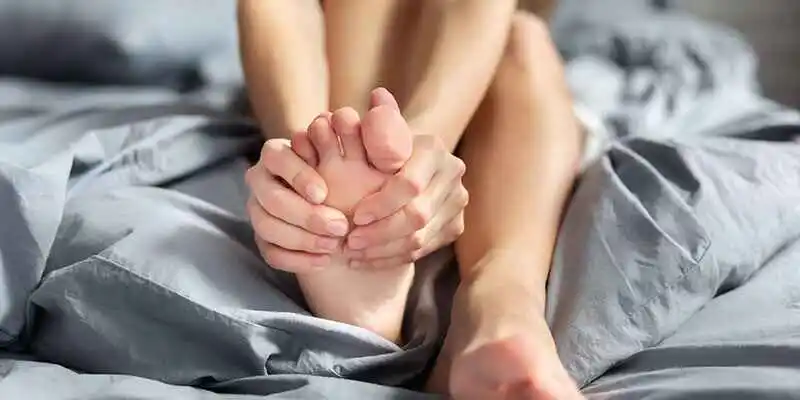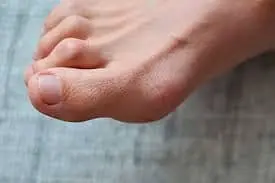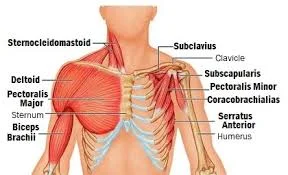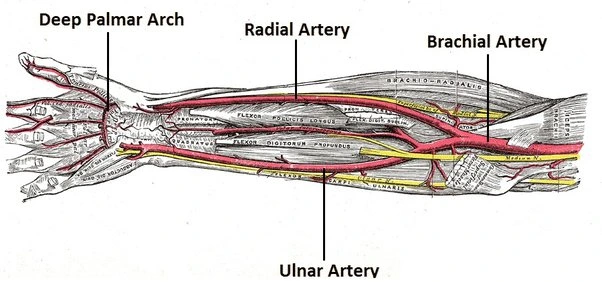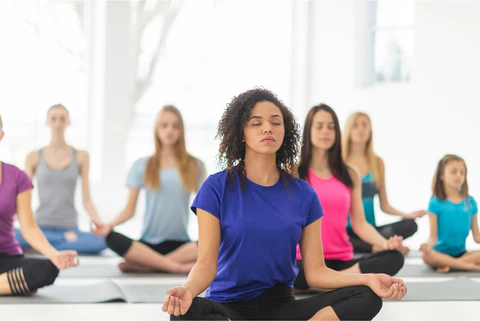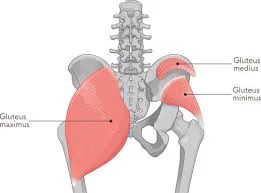17 Best Exercises For Foot Cramps
Exercises for the feet cramps can strengthen and increase flexibility while also reducing the risk of foot or ankle pain. Stretching your Achilles tendon, big toe stretches, toe splays and sand walking are suggested exercises. Exercise is important to maintaining the health of your body.
Most foot exercises are simple to perform and don’t cost much money to buy expensive equipment. They can be done at the gym or home as a regular part of a routine of exercise.
Fortunately, several activities and lifestyle modifications can help reduce the severity and frequency of foot cramps. The following guide will lead you through a list of exercises that focus on the muscles in your lower legs and feet, improving circulation, strength, and flexibility.
Introduction:
Foot cramps are a frequent and uncomfortable problem that a lot of people deal with daily. Although there are many potential causes for foot cramps, dehydration, muscle tiredness, poor circulation, and specific medical problems are frequently mentioned.
To make sure that the muscles are offering the best support, it can be helpful to stretch and exercise the ankles and feet regularly. These exercises not only increase the range of motion in the feet but also have the possibility of helping improve an individual’s life.
Including these workouts in your daily routine could help reduce the frequency of foot cramps and improve the general health of your feet. After any foot problem, regaining mobility and strength is essential. You can resume your normal activities and participate in the healing of the injured tissue by doing this.
What are foot cramps?
A cramp in your leg, foot, or thigh is a sudden, intense, and uncontrollable pain. Sometimes the cramp will cause your leg to spasm, or stiffen uncontrollably. Even while leg cramps are uncomfortable, they are usually harmless.
Possible reasons why people get foot cramps:
- Inactivity lifestyle
Extended periods of inactivity, such as sitting, can increase the possibility of nighttime foot cramps. In addition to reducing blood supply to your feet and causing nerve compression, sitting with bad posture increases your risk of experiencing cramps.
- Muscle straining excessively
Your feet may become more at risk for cramping if you overwork their muscles.
Your feet’s muscular fibers constantly contract and expand to allow mobility. Muscle tiredness can occur if you overdo an activity too soon or if you exercise your feet excessively hard.
- Unsuitable footwear or hard flooring
Additionally, wearing shoes that are too small or lack sufficient support throughout the day can strain the muscles in your feet. Similar effects can occur when standing or working on hard surfaces like concrete flooring.
The muscles in your feet have to work harder to maintain your body weight. In addition to reducing blood and oxygen flow to the feet, improper footwear can cause excruciating spasms that hurt even when you’re not on your feet.
Strengthen Your Feet:
You may increase your feet’ strength, flexibility, and range of motion by exercising them. It can be equally satisfying to strengthen your feet as it can strengthen another area of your body. Although we frequently overlook them in our daily duties, your feet are very important.
However, we can move and take care of our needs due to our feet. For those of us who are lucky enough to be problem-free with our feet, it matters to take proper care of them to maintain long-term health.
Ankle pumps, toe rises, elevating off the floor for repetitions and sets, and toe flexions are a few foot health exercises. It is best to consult your doctors to find the right program for you. Each person has unique needs and physical characteristics, therefore maintaining foot strength requires different exercises for each person.
You might observe changes in your feet and their potential strength after you start a regular training program.
How to decide whether the level of your exercise is right for you:
Pay attention to how much pain you are experiencing when exercising, especially at first. These workouts might first cause a modest increase in your symptoms. But with time and regular exercise, they are supposed to get easier while improving foot movement.
You can figure out whether you’re exercising at a suitable level with the help of this guide.
It allows you to choose the ideal level of difficulty.
Ranking your pain on a scale of 0 to 10, with 10 representing the worst pain you have ever experienced, can be useful. For example, be as follows
- 0 to 3 indicates little pain
- 4 to 5 indicates moderate pain
- 6 to 10 indicate serious pain
Pain when exercising:
Try to keep the score of your suffering between 0 and 5. If your pain reaches this limit, you can modify the exercises by:
- Decreasing down on how often you do a movement
- Lowering a movement’s speed
- Expanding the intervals between movements for rest
Pain after working out:
Your current foot pain shouldn’t get worse during exercise. Yet when the body adjusts to new movements, learning new workouts can lead to in temporary muscular pain. Pain of this type will go away fast, and the next morning after working out, your pain shouldn’t be any more severe.
How much and how frequently perform the exercise:
To relieve your foot pain, you should progressively include activities into your routine. You can choose to perform each exercise in sequence or to begin with just one or two and work your way up to more as you feel more relaxed.
Movement and strength workouts:
The frequency with which you perform a single movement is referred to as repetitions. When beginning new workouts, it can be beneficial to perform 2 to 3 repetitions at a time.
It’s better to work in modest steps throughout the day. For example, practice repetitions every hour.
As this becomes simpler, and if you feel capable, add 1 or 2 repetitions to the movements every few days.
Before beginning an exercise program, take a look into the following safety measures:
Consider a few safety precautions and maximize the benefits before beginning any exercise program. To find out which exercises work best for your specific problem, discuss with your doctor or physical therapist.
It’s necessary to be aware of what your body requires and to avoid pushing yourself when it hurts. Pain is a common side effect of exercise, but chronic or intense pain could suggest overexertion. Start with low-impact exercises until you can tolerate more pain before progressing to more intense activities.
It’s important to keep good form and posture to prevent reoccurring injuries. Contact a doctor if you’re unsure about how to begin exercising correctly. To prepare your joints and muscles for the task at present, warm up before beginning any exercise.
Best Exercises For Foot Cramps:
The feet can become more movable and flexible with the help of a couple of exercises.
Achilles tendon stretch
The Achilles tendon is the tendon that joins the heel to the calf muscles. Although it can strain easily, maintaining its strength can help with tightness and pain in the legs, ankles, or feet.
- Lift your arms so that your palms are flat against the wall while you face it.
- Step back with one foot while maintaining a straight knee.
- Next, bend the knee of the leg that is opposite.
- Keep both of your heels flat on the ground.
- Raise your hips until your calf muscles and Achilles tendon start to stretch.
- Hold this position for a few seconds.
- Then return to your neutral position.
- Then relax.
- Repeat this exercise four to eight times.
You can press your hips forward and bend your back knee for a slightly modified stretch.
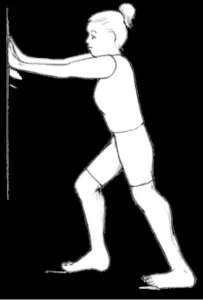
Golf ball roll exercise
A golf ball rolled under the foot can help reduce pain and any stiffness or tightness in the arch.
- With your feet flat on the ground, take a chair and sit up straight.
- A golf ball should be placed on the ground close to the feet.
- Place one foot on the ball and push down as firmly as feels comfortable while moving it around.
- The ball should be rubbing the foot’s bottom.
- Continue to move the ball around for 2 to 3 minutes.
- Then return to your neutral position.
- Then relax.
- Repeat this exercise four to eight times.
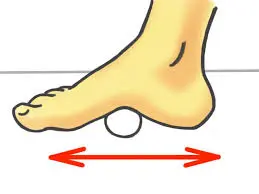
Toe extension exercise
When it comes to avoiding or treating heel pain during walking and having trouble lifting the toes, the toe extension is helpful.
- With your feet flat on the ground, take a seat and sit up straight.
- Lay the left foot atop the right leg.
- Bring the toes up to the ankle.
- You should feel a stretch in the bottom of the foot and your heel tendon.
- Hold this position for a few seconds.
- Then return to your neutral position.
- Then relax.
- Repeat this exercise four to eight times.
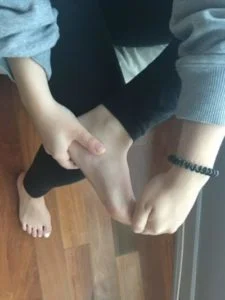
Toe raise, point, and curl
This workout, which includes three different phases, will strengthen the entire foot and toes.
- With your feet flat on the ground, take a chair and sit up straight.
- Lift the heels while maintaining the toes on the ground.
- When your feet are the only parts still on the ground, stop.
- Step down the heels after a few seconds of holding this posture.
- During the second stage, toes should point downward, heels should be raised, and just the tips of the big and second toes should make contact with the ground.
- After a few seconds of holding through, release.
- To get just the tips of your toes touching the floor during the third stage, elevate your heels and curl them inward.
- Keep your posture for a few seconds.
- Then return to your neutral position.
- Then relax.
- Repeat this exercise four to eight times.
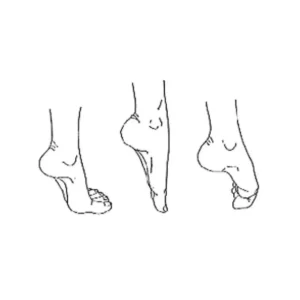
Toe splay exercise
The toe splay exercise helps improve control over the toe muscles. based on which foot feels more comfortable, people can perform it together on both feet or alternately.
- Place your feet softly on the floor while you sit in a straight-backed chair.
- As much as you can without struggling, spread your toes apart.
- For a few seconds, maintain this posture.
- Then return to your neutral position.
- Then relax.
- Repeat this exercise four to eight times.
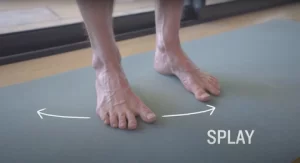
Toe curls exercise
Strengthening the flexor muscles in your feet and toes through toe curls increases your overall strength.
- Placing your heels under your knees, take a seat (standing is also an option).
- Assure that the toes of both your feet and legs point forward and are parallel to one another.
- Spread the towel out and plant a flat foot on it.
- The towel is going to be moved in your direction.
- As you elevate your toes and flex your foot back, maintain your heel down.
- As you extend out evenly along both sides and the middle of your foot to get your foot to land on the towel as far out as you can, keep your heel on the towel.
- Pinch the towel in with your arch and toes while maintaining the heel stable.
- Pull the towel toward you.
- Make use of all five toes on both sides of your foot to create an extended circle under the arch area.
- Each time you draw back and extend, you will only be able to move a little portion of the towel.
- Then return to your neutral position.
- Then relax.
- Repeat this exercise four to eight times.

Marble pickup exercise
The muscles on the undersides of the feet and toes can become stronger by performing the marble pickup exercise.
- Putting both feet flat on the ground, take an upright seat in a chair.
- On the ground in front of the feet, place a bowl that is empty and another that contains 20 or more marbles.
- Place every marble into the empty bowl using only one foot’s toes.
- Then return to your neutral position.
- Then relax.
- Repeat this exercise four to eight times.
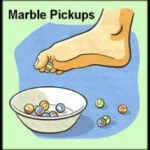
Standing Calf Raise exercise
- Position yourself on a yoga or exercise mat, keeping your toes pointed forward and your feet shoulder-width apart.
- You can do standing calf raises on the floor if you don’t have a mat.
- Maintain a straight back, lowered shoulders, and tight abdominal muscles.
- Gently raise your heels while maintaining an extended (but not locked) knee.
- Step as much as possible on your toes.
- Hold this position for a few seconds.
- Back down to the floor with your heels.
- Then return to your neutral position.
- Then relax.
- Repeat this exercise four to eight times.
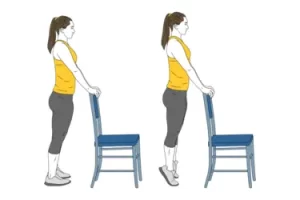
Bent-Knee Heel Raise exercise
By strengthening the collagen with the Achilles tendon, bent-knee heel raises prepare the tendon to endure the force of your foot hitting the ground.
- Put your heels resting over a box or bench.
- Put your hands on the wall in front of you to help you stay stable.
- Put your left leg under your weight.
- After lowering the left heel toward the floor, press up to lift it above the bench or box’s height.
- Maintain a bent leg at all times.
- Then return to your neutral position.
- Then relax.
- Repeat this exercise four to eight times.
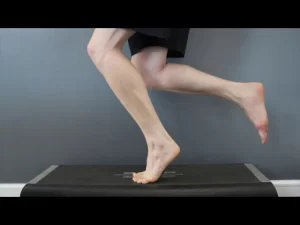
The Asterisk exercise
The heel, big toe, and tiny toe ball are all strengthened by this exercise. Additionally, it increases ankle mobility when maintaining full body weight.
- Keeping your weight on your right leg, take a straight posture.
- Tap the floor before your left toe while pointing your right toe.
- Return to the starting point and press directly in front of you.
- Continue rotating counterclockwise.
- Lastly, press the foot that is pointing behind and across from the opposing foot.
- On the left, go in a clockwise direction.
- Then return to your neutral position.
- Then relax.
- Repeat this exercise four to eight times.
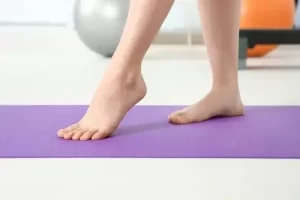
Alphabet write with the toe exercise
Try writing the alphabet with your big toe to improve ankle and big toe mobility. The pressure that tight shoelaces and causes the toes to flex rapidly can generate in the muscles and tendons on the top of the foot can be relieved with this exercise.
- Take a comfortable seat or stand.
- Start with the capital letters and write the alphabet in the air using your big toe while raising your foot a few inches.
- Make long, downward strokes.
- Write lowercase characters after you’ve completed the alphabet.
- Then return to your neutral position.
- Then relax.
- Repeat this exercise four to eight times.

Towel Stretch
- You may perform this basic stretch while sitting on the floor or in bed.
- Sit on the floor or your bed, legs out in front of you.
- Place a rolled-up towel under both heels of your feet and grip it from both ends.
- Pull the towel gently towards yourself, keeping your knees straight.
- Hold this position for a few seconds.
- Then return to your neutral position.
- Then relax.
- Repeat this exercise four to eight times.
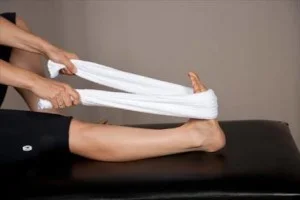
Foot Roller exercise
- Choose a comfortable chair and place the foot roller on the floor.
- Put the sole of your foot on the foot roller and gently press down.
- Using the roller, slowly roll your foot back and forth, focusing on your toes, heel, and arch.
- Then return to your neutral position.
- Then relax.
- Repeat this exercise four to eight times.
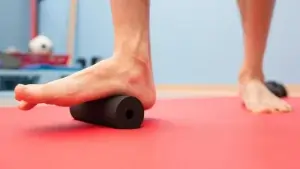
Tip-toe walk exercise
To strengthen your calf muscles and increase your ankle stability and control, take a few minutes each day to walk around on your tiptoes. Using a stick for walking or a frame as a support could be beneficial.
- Step your toes forward and space your feet hip-width away.
- Maintain your core, blades, and chin pulled in.
- Exhale, raise your heels off the ground so that they point forward.
- Then return to your neutral position.
- Then relax.
- Repeat this exercise four to eight times.
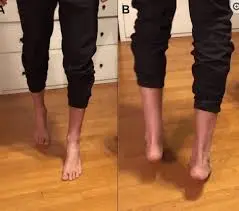
Ankle Dorsiflexion/Plantar Flexion
A comfortable resistance elastic stretch band should be used.
- Extend your legs in front of you while seated on the ground.”
- To achieve dorsiflexion, attach the elastic band around the leg of a chair or table and then wrap your foot.
- Slowly bring your toes back up to the starting position.
- Then relax.
- Repeat this exercise four to eight times.
- To do plantar flexion, wrap your foot with the elastic band while grasping the ends in your palm.
- Return to the starting position slowly while turning your toes gently.
- Then relax.
- Repeat this exercise four to eight times.
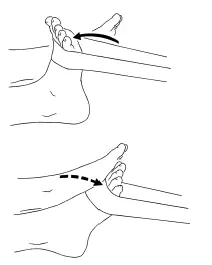
Sand walking
Stretching and strengthening the calves and feet can be achieved by walking barefoot on beach areas. Walking in sandy areas is more strenuous due to its soft texture, which makes it an excellent exercise in general.
- Go somewhere with sand a beach, a barren landscape, whatever.
- Take off your socks and shoes.
- Walk for as long as you can.
- To avoid overstretching your foot and calf muscles, try extending the distance very gradually.
- Then relax.
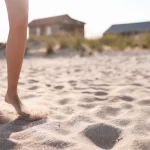
Limber up exercise
- Place your feet firmly on the ground and settle in.
- Lift your left leg such that your foot is over the ground.
- Now move your big toe in clockwise circles in the air.
- Make another counterclockwise circle by reversing the direction.
- Then return to your neutral position.
- Then relax.
- Repeat this exercise four to eight times.
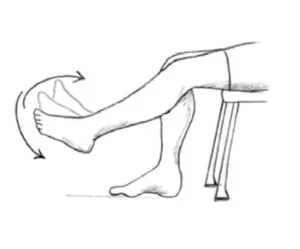
The following advice is useful to keep in mind when exercising:
- If you get any form of pain during exercise, stop right away.
- Before performing the exercise, warm up and stretch.
- Between workouts, give yourself a rest.
- It is important to perform all exercises under the protocol, which specifies a suitable amount of repetitions for each exercise as well as stretches before and holds in between.
- Dress comfortably so that your body may move easily while working out; avoid wearing anything too tight.
- If the stiff muscles seem tough to stretch, that’s okay, but you shouldn’t ever feel sharp or severe pain.
What can I do to avoid getting foot cramps?
- Exercise
Indulge in light, quick walking or biking shortly before bed, and do leg exercises during the day.
- Drinking plenty of water
Stay away from alcohol and caffeinated drinks and drink a minimum of five to eight glasses of water daily.
- Vitamins and medications
Follow your doctor’s instructions completely when taking any supplements or prescribed medication, including muscle relaxants.
- Footwear
Put in supportive footwear.
- Position during sleep
Try a variety of positions to see which one is most effective. If you are lying on your back, keep your toes up, and if you are lying on your front, hang your feet over the end of the bed.
- Stretching
Stretch your legs frequently. Before and after going out, as well as directly before bed, stretch your legs.
Health and safety tips for feet:
In order to maintain healthy, strong feet:
- Exercise should only come after an effective warm-up.
- When playing sports and other everyday activities, use supportive footwear.
- As quickly as possible, replace any worn-out shoes.
- Observe your physical state. Don’t try to accomplish too much.
- Stay away from uneven ground, especially when running. Don’t run too much uphill.
- To prevent any injury repetition, take it easy and get the medical care you need.
- To strengthen your feet and ankles, gradually raise your strength and flexibility.
When to Visit a Doctor for Advice:
Typically, foot cramps pass quickly. It might be advisable to consult your physician if you,
- Self-care does not eliminate your cramps.
- Your pain is unbearable.
- Muscle spasms occur frequently.
- Your muscle spasms take a long time to go away.
- Along with cramps, you experience muscle weakness or clumsiness.
- You wake up at night because of your cramps.
Summary
Involuntary, painful muscle contractions that might continue for minutes or seconds are known as leg cramps. They have an impact on your overall well-being, sleep patterns, and fitness routines. They can be caused by certain illnesses, medications, and risk factors that you should stay away from. Try flexing the affected muscle, applying pressure to the area, and using heat or ice when a cramp occurs.
Regaining movement and strength is important following any foot issue. This helps with tissue repair and allows you to resume your activities. Resuming your usual routine of exercise may require some time, and the first outcomes may not be seen right away. Still, following a foot issue, the most effective strategy to achieve positive short- and long-term outcomes is a gradual return to regular activity.
When foot cramps are treated at home with stretching exercises or lifestyle modifications like increasing drinking water, they usually go away on their own. If your cramps are extremely uncomfortable, or if you see any changes to the foot or its surrounding structures, such as swelling or redness, consult your doctor.
FAQ
How can anyone relieve a foot cramp?
To alleviate the cramp, flex your foot and put pressure on your big toe. Firmly just softly extend your foot. Moving about and kicking your legs might also help relieve cramps in your legs and feet. You may relieve any persistent pain by using ice, taking a warm bath or shower, or doing both at once.
How can you exercise without experiencing foot cramps?
Stretch and warm up properly before starting any exercise. Stretch after your workout to avoid your warmed-up muscles shortening and cramping. When you exercise, keep your posture correct. It’s important to drink water before, during, and shortly following physical activity.
How long do foot cramps continue?
Most cramps only last a few minutes, but there are a few simple remedies you may try to help your muscles release. Because they increase blood flow, which in turn triggers your body’s natural process for eliminating waste and distributing nutrients, heat and massage are effective muscle relaxants.
What is the cause of foot cramps?
Wearing shoes that are too tight or overexerting yourself might cause foot cramping. Foot cramps, however, can also be put on by a few medical conditions. Foot cramps are the result of your foot muscles spasming painfully and uncomfortable.
Which natural treatment for leg cramps works the best?
A warm bath or shower could be helpful in the release of tight muscles. Alternatively, you might cover the region with a warm towel or a heating pad. Apply an ice pack or an ice bag to the muscle that is cramping once the pain is starting to ease. Don’t forget to cover it with a cloth beforehand to avoid irritating your skin.
Do foot cramps cause a concern for me?
The unusual cramping in the feet normally goes away with gentle stretching and massage, so there’s no need to worry. However, your doctor should be seen if you experience frequent foot cramps.
Why do my legs and feet cramp up at night?
In general, they most usually arise from nerve problems and tired muscles. The possibility of having nighttime leg cramps increases with age. Leg cramps at night are also more common in pregnant women. It is recognized that renal failure, diabetic nerve damage, and blood flow problems can result in nighttime leg cramps.
Which type of exercise is most effective for treating foot cramps?
Golf ball roll exercise
Toe raise, point, and curl
Toe splay exercise
Toe curls exercise
Standing Calf Raise exercise
Does walking build stronger muscles in the feet?
Develop stronger ankle and foot bones and muscles. Improve the flexibility and stability of the tendons, ligaments, and muscles.
Does stretching relieve the pain in your feet?
Stretching your Achilles tendon, big toe stretches, toe sprawls and sand walking are a few possible exercises. Foot exercises can lower the risk of foot or ankle pain while also strengthening and increasing flexibility. Stretching your Achilles tendon, big toe stretches, toe sprawls and sand walking are a few possible exercises.
How can leg cramps occur at night?
Leg cramps during the night tend to happen when you’re sleeping or not moving around much. They could cause you to wake up, limit your ability to get back asleep and cause you to have pain throughout the night. Leg cramps can happen every night, every month, every week, or every year, depending on the individual.
Is there a cure for leg cramps?
As of now, there is no known treatment for leg cramps. Fortunately, you may control and avoid leg cramps by doing certain actions.
Can a person’s leg cramps worsen?
Depending on the individual. Prevention and treatment methods work for some people, but not for others. With age, your cramps may become more severe and frequent.
Why do foot cramps hurt so much?
The severity of the involuntary muscular contraction that results in an acute tightening of the foot muscles can make a muscle cramp in your foot extremely painful.
What is the recommended duration for ankle exercises?
To help avoid reinjury, stretching exercises should be maintained daily, especially before and after physical activities. Maintain the strength and control of your ankles by performing strengthening and balancing exercises many times a week, even after your ankle feels better.
References:
- December 21, 2023; Cadman, B. The best exercises and stretches for strong feet. For mobility and flexibility, see https://www.medicalnewstoday.com/articles/320964#. Citation within text: (Cadman, 2023)
- On November 1, 2023, Schultz, W. Seven simple exercises that relieve foot discomfort. The HealthPartners Blog. These seven simple exercises can help relieve foot pain.
Within-Text Reference: (Schultz, 2023) - 2018 November 16 J. Workouts and Foot Pain. Suffolk Foot and Ankle. Exercise for Foot Cramps: https://www.suffolkfootandankle.com/
cited in-text: (2018) - (2024, January 26). Watson, K. Reasons for Foot Cramps at Night and How to Treat Them. Takeaway from Healthline: https://www.healthline.com/health/foot-cramps-at-night Watson, 2024 is cited in the text.
- C. C. M., Professional (n.d.). cramps in the legs. https://my.clevelandclinic.org/health/diseases/14170-leg-cramps Cleveland Clinic
Reference within the text: (Professional, n.d.) - Foot Problem Exercises NHS Inform. (2023, December 1). NHS Inform. https://www.nhsinform.scot/illnesses-and-conditions/muscle-bone-and-joints/exercises/foot-problems-exercises/
Citation: (Exercises for Foot Problems | NHS Inform, 2023). - S. Ha (2017) 25 September. Plantar Fasciitis Exercises: The Top 10. Foot & Foot. Exercises for Plantar Fasciitis: 10 recommended exercises for alleviating heel pain
In-text Reference: (Ha, 2017) - Image 1, Achilles tendonitis stretches and exercises. (As of now). Stretches and exercises for tendinitis in the Achilles tendon and its variants
In-text Citation: (Achilles Tendonitis Stretches & Exercises, n.d.) - Image 2, M. R. C. C. Cscs, M. R. (2021) January 10. Ankle and Foot Activation. Ankle activation exercises by Prehab Exercises. https://prehabexercises.com/
Citation within the text: (Cscs, 2021) - Image 4, Point, Curl, and Lift the Toes (n.d.). skimble.com. Exercise instructions: https://www.skimble.com/exercises/31217-toe-raise-point-curl.
(Toe Raise, Point, Curl, n.d.) In-Text Citation - Image 5, On January 12, 2020, B. not a title. Physiotherapists in Bearsden. Foot and ankle exercises: https://bearsdenosteopaths.co.uk/
The in-text citation is 2020. - Image 6, M. O. M. Ryt (2021, June 4). Methods for Curling a Towel. well-fitted. Learn how to strengthen your feet by curling your towel (Exercise 2704696).
Reference inside text: (Ryt, 2021). - Image 7, Exercises for Treating Plantar Fasciitis: An Examination of Foot Pain. (n.d.). The Foot-Pain-Explored website. Plantar fasciitis exercises are available at https://www.foot-pain-explored.com.
Internal Reference: (Exercises for Plantar Fasciitis & Treatment – Foot Pain Investigated, n.d.) - Image 8, T. Baleika (n.d.). The calf lifts. Physical activity. silhouettes of female athletes. Exercise and instruction. Dreamtime. The calf-raise exercise is illustrated on Dreamstime.com.
Reference within the text: Baleika, n.d. - Image 9, August 8, 2018, F. A. S. T. YouTube: Bent-Knee Heel Raises. qkl3tQg9360 can be seen on YouTube.
In-text Reference: (2018) - Image 10, Depositphotos (n.d.) offers royalty-free stock photos and images of foot exercises. The website Depositphotos provides a photo gallery with foot exercises.
Textual Citation: (Depositphotos, n.d.) Foot Exercises Stock Photos, Royalty-Free Foot Exercises Pics - Image 11, 2020 May 21 H. H. P. Strengthening your feet and ankles with the “alphabet exercise” YouTube. Watch this: https://www.youtube.com/watch?v=vHMJ0zgrsFU
The in-text citation is 2020. - Image 13, F. May 24, 2023. Exercises for plantar fasciitis include stretches that alleviate heel pain. The Georgia Superior Foot and Ankle Unit. Ten great exercises to help treat plantar fasciitis are listed below: The blog at afaig.com
Source: (2023) in the text - Image 14, On November 8, 2023, Darbois, N. Causes & Advice for Adults, Teens, and Children Who Walk on Tippers. Fonto Media: Health, Communication, and Physical Therapy. Walking on tiptoes can be seen at https://kinedarbois.fr/en/2023/07/22/
In-text Reference: Darbois, 2023 - Image 15, On June 30, 2022, Han, S. Ankle range of motion and muscle strength as affected by Theraband and flossing band exercises. Orthopedic and Sports Physical Therapy Archives, 18(1), 19–25. 10.24332/aospt.2022.18.1.03 can be found online.
Han (2022) is cited in the text. - Image 16, May 18, 2022: Braga, L., & Braga, L. Advantages of Sand-Walking Barefoot | The Clinics at Jackson. Physical therapy at Jackson Clinics. Go barefoot at https://thejacksonclinics.com
Reference within the text: Braga & Braga, 2022

